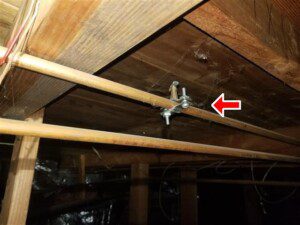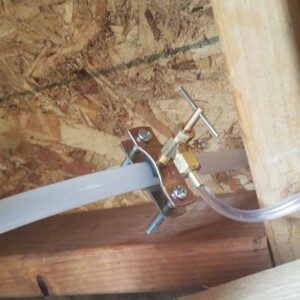
Self-piercing saddle valves are used primarily as a way to tap into an existing water pipe in order to connect another supply pipe. These are usually used when a refrigerator with a water dispenser, ice maker, or water filtration system is installed in a place where one did not previously exist. Instead of installing a T-fitting, or T-valve at an existing water pipe, as is required by current building standards, a self-piercing saddle valve can be installed without having to turn off the water supply and cut into existing pipes. You can see why many installers choose self-saddle valves as an alternative to what can otherwise sometimes be a pretty major plumbing project.
The problem with self-piercing saddle valves, is that they are notorious for causing water leaks. If the self-piercing saddle valve is located in a place that is not normally observed, such as in a crawlspace or even worse, inside and enclosed wall, leakage can go undetected, and can cause mold growth and moisture damage issues. Sometimes repairs caused by leaking self-piercing saddle valves could lead to repair costs that can reach into the thousands of dollars. So is the convenience of installing a saddle valve worth it? Probably not.

When a self-piercing saddle valve is installed, the needle part penetrates into the existing water supply pipe to create a hole for the water to be transferred from the supply pipe to a pipe or tube being installed to supply water to something like an ice maker. In most cases, self-piercing saddle valves are installed on copper or plastic pipes. Since copper and plastic pipes are prone to expanding and contracting as water temperature, or the temperature around the pipe fluctuates, seals at saddle valve can become worn or loose, resulting in a water leak.
Please check out the video below about self-piercing saddle valves, and why they should never be installed in a residential water supply system.
